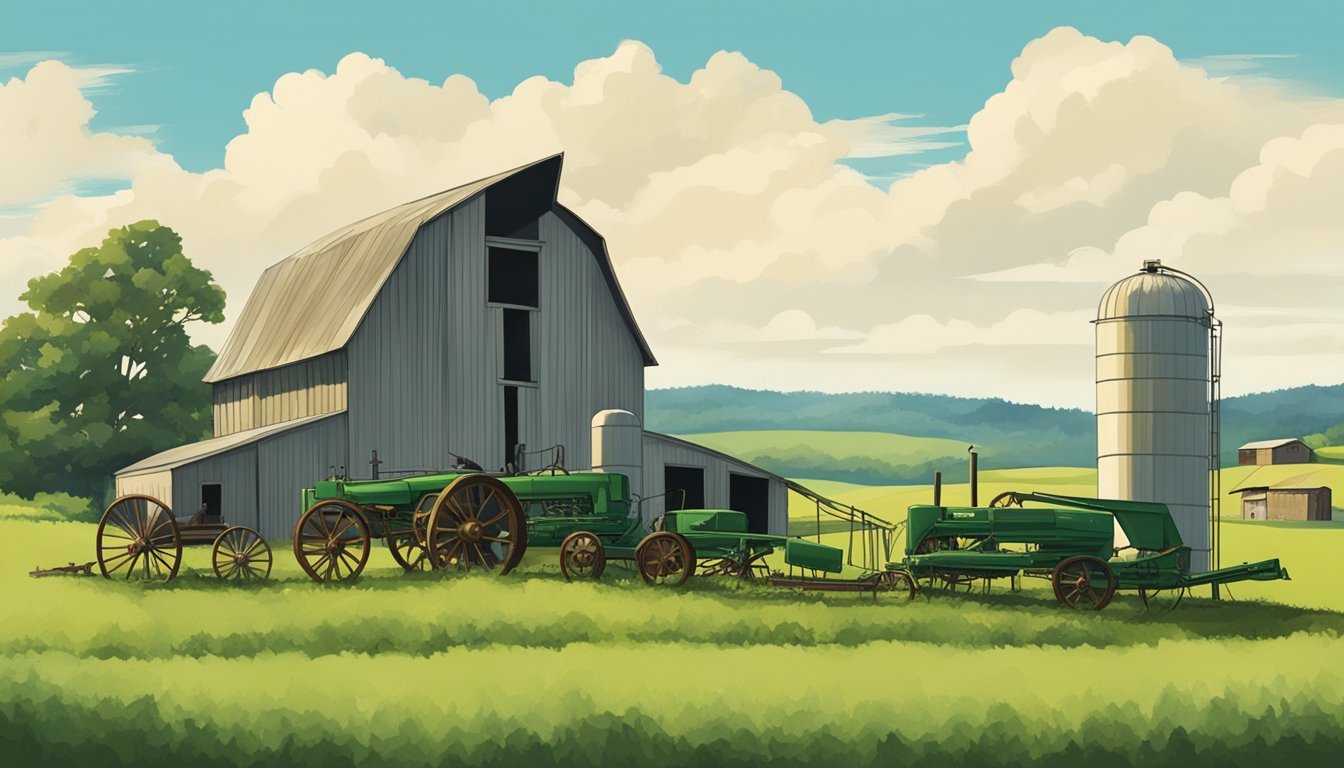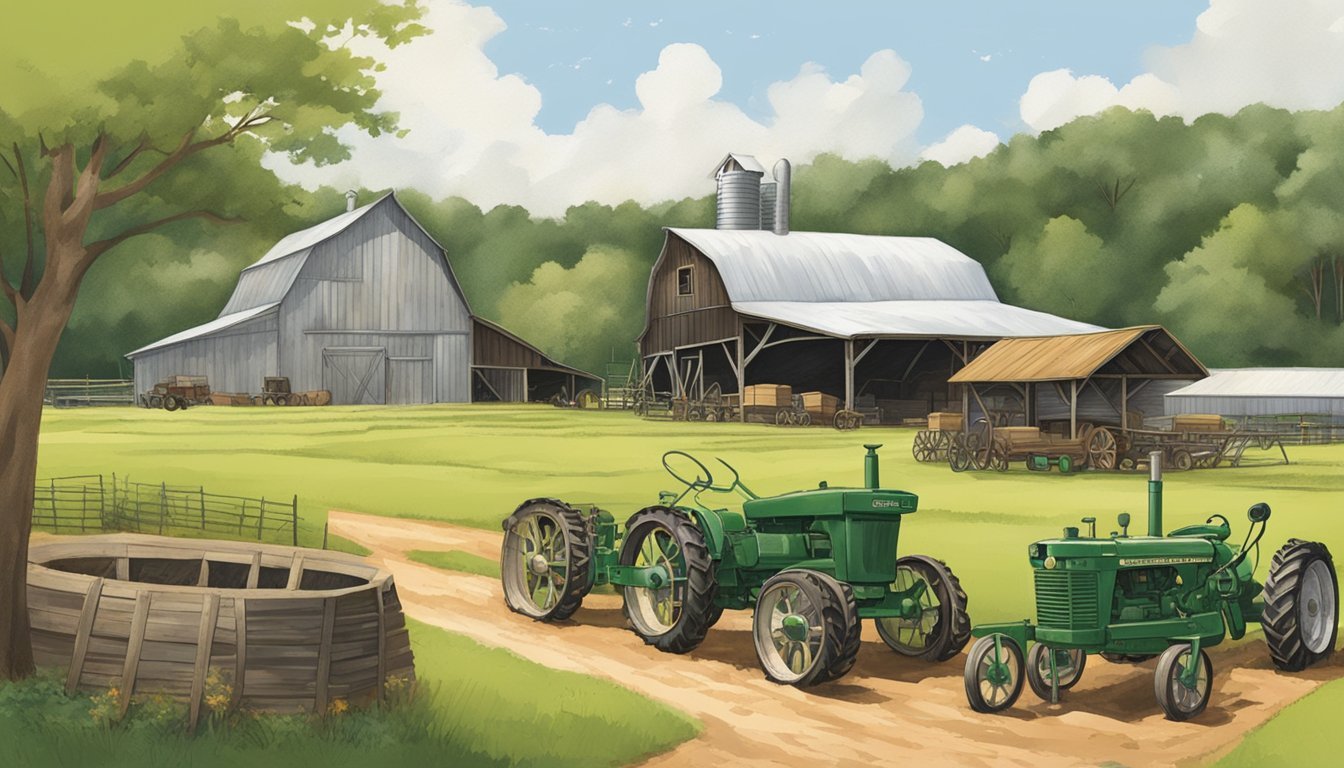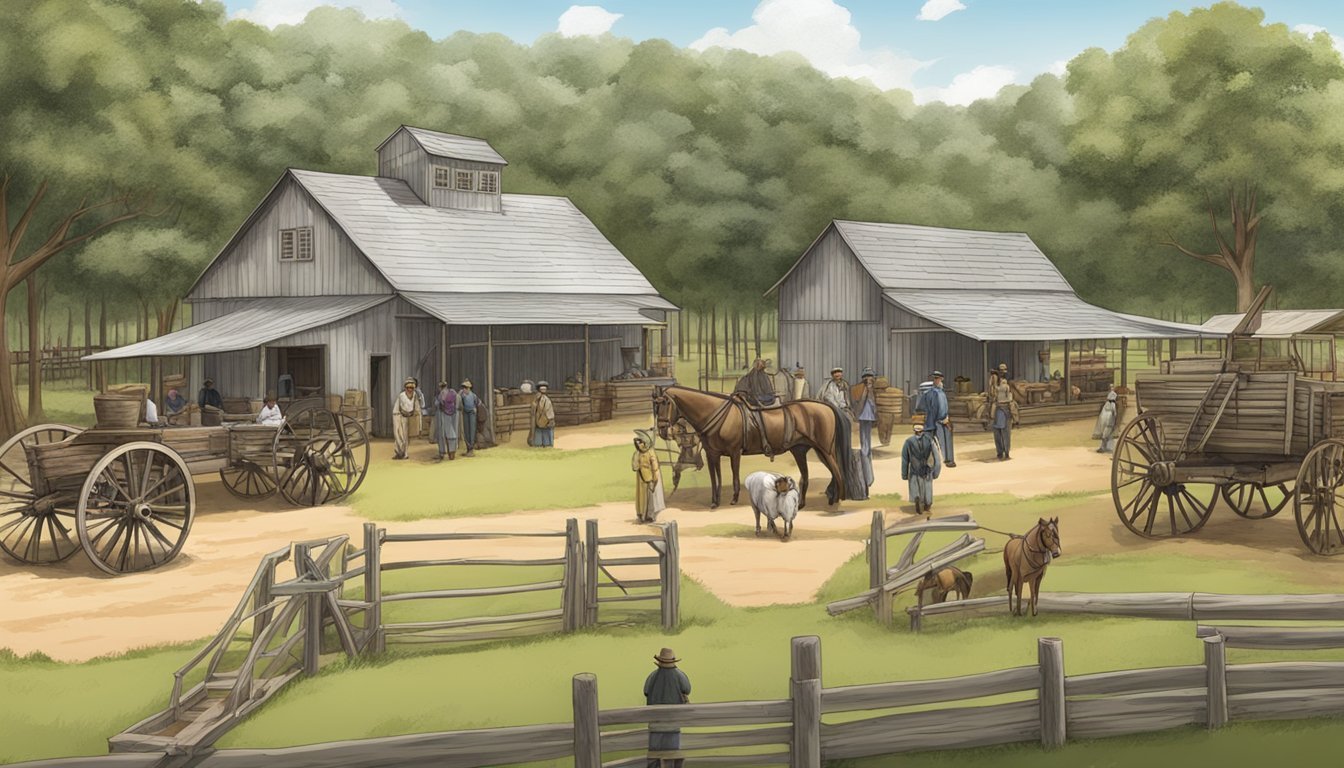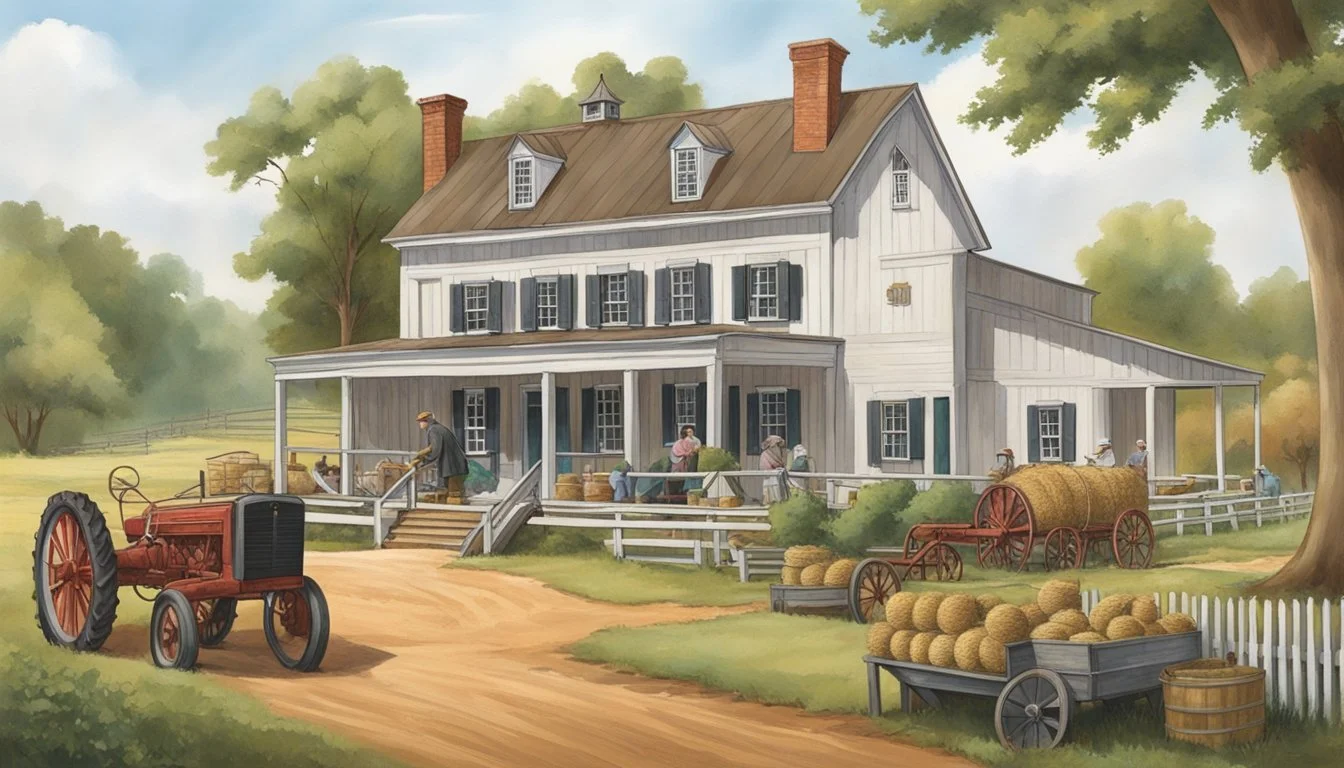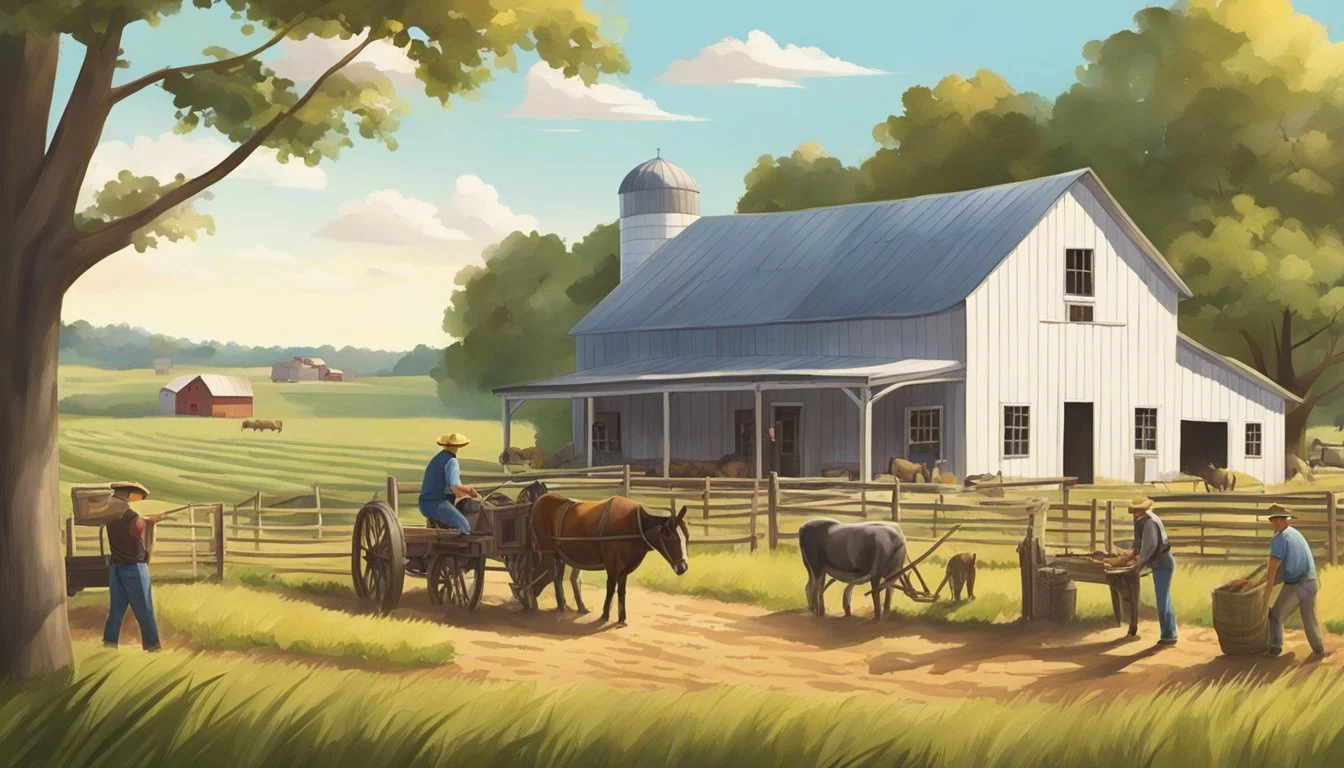Historical Farms and Agricultural Museums in Alabama
A Guide to the State's Agrarian Heritage
Alabama's historical farms and agricultural museums offer a unique insight into the state's rich heritage and the evolution of its agricultural practices. These institutions preserve the legacy of farming techniques, equipment, and rural life that shaped the region's economy and culture. Visitors to these museums and living history farms can step back in time and experience firsthand how farmers and their families lived and worked the land through the centuries. From displays of historic farm equipment to recreations of pioneer living, the state's agricultural museums provide a valuable educational resource that celebrates Alabama's rural past.
The exploration of history through these museums and farms isn't just about viewing static exhibits—it's an immersive journey that engages all the senses. Many of Alabama's historical farms are working operations, using traditional methods to grow crops and tend to animals, which allows guests to observe and sometimes participate in daily farm activities. Meanwhile, the agricultural museums often showcase the archaeological findings of Southeastern Native American cultures, the Material culture of pioneer Alabama, and even period-specific militaria, adding diverse layers to the state's storied agricultural timeline.
These institutions play a crucial role in the preservation of Alabama's agricultural history and culture. They serve as community anchors that not only safeguard but also interpret the rural history of the state for future generations. Whether one has a direct connection to farming or not, visiting one of Alabama's historical farms or agricultural museums offers a window into the state's heritage and a reflection upon the agricultural milestones that have contributed significantly to Alabama's development and identity.
Historical Significance of Farms in Alabama
Farms in Alabama have played a crucial role in shaping the state's history, economy, and culture. From the practices of indigenous peoples to innovations introduced by figures like George Washington Carver, Alabama's agricultural landscape provides a rich tapestry of historical significance.
Agriculture in the Civil War Era
During the Civil War era, agriculture was the backbone of Alabama's economy. Large plantations dominated the landscape, with cotton as the principal cash crop. Farms in the state provided critical supplies for Confederate forces. However, the war brought significant upheaval, leading to the destruction of land and the eventual collapse of the plantation system.
Impact of Slavery on Agriculture
Slavery was integral to the agricultural economy of Alabama, with enslaved people constituting the primary labor force on plantations. The work of slaves was essential in planting, cultivating, and harvesting crops, especially cotton. The end of slavery dramatically altered farming practices, leading to sharecropping and tenant farming systems.
Native American Farming Practices
Prior to European settlement, Native American tribes in Alabama practiced sustainable forms of agriculture. They cultivated corn, beans, and squash, employing techniques like slash-and-burn to clear fields. The removal of these tribes during the 1830s resulted in the loss of these traditional practices and a shift towards plantation-style agriculture.
George Washington Carver's Contributions
George Washington Carver is renowned for his contributions to Alabama's agricultural development. Working at Tuskegee Institute in Alabama, Carver introduced crop rotation methods, advocating for planting peanuts and other legumes to enrich the soil after cotton harvests. His work greatly benefited the soil quality and farmers' livelihoods in the state.
Agricultural Museums in Alabama
Alabama’s rich agricultural history is celebrated and preserved in several agricultural museums throughout the state. These museums offer a glimpse into the past, showcasing the evolution of farming and rural life in the region.
Landmark Park and the Wiregrass Region
Landmark Park, recognized as Alabama's Official Museum of Agriculture, represents the cultural and natural heritage of the Wiregrass Region of southeast Alabama. This 100-acre park features an 1890's living history farm and hosts educational programs and events, such as plowing competitions and spring farm days, encapsulating the agricultural legacy of the area.
American Village in Montegomery
While not solely an agricultural museum, the American Village in Montegomery offers an educational experience that includes aspects of agrarian life during the colonial period. The village provides a unique backdrop to understand the early American farming practices and the roles they played in the community's daily life and independence.
Tuskegee Institute National Historic Site
The Tuskegee Institute National Historic Site holds a significant place in the agricultural history of Alabama. Founded by Booker T. Washington, the institute became a pivotal center for research in farming techniques and agricultural education, changing the landscape of agriculture in the South. The site showcases historical buildings and monuments, which are testament to the advances and education in agricultural practices.
Cultural and Educational Programs
Historical farms and agricultural museums in Alabama offer a rich tapestry of cultural and educational programs. These programs are meticulously designed to convey the state’s agricultural heritage and to engage visitors of all ages in the appreciation of past farming practices, folk traditions, and the progression of agricultural technology.
Folklife Exhibits and Demonstrations
At institutions like ALHFAM, visitors can immerse themselves in authentic folklife exhibits. They witness firsthand demonstrations of traditional agricultural techniques, such as blacksmithing, quilting, and weaving, that provided the foundation for today's farming practices. These demonstrations not only exhibit historical skills but also interpret the cultural significance behind them, providing a comprehensive understanding of the region's agricultural legacy.
Children's Educational Activities
Educational activities for children are a cornerstone of programs at places like the Pioneer Museum of Alabama. Interactive experiences, such as guided tours, hands-on workshops, and seasonal events, are designed to engage young minds and foster an appreciation for Alabama's agrarian past. These activities are often tailored to complement school curricula, enhancing children’s learning with practical and enjoyable experiences.
Agricultural Science and Industry Exhibits
The evolution of agricultural science and industry is vividly presented through exhibits at venues like the Alabama Agricultural Museum at Landmark Park. Here, visitors can explore historic farm equipment and learn about the advances in agricultural technology that have shaped modern farming. These exhibits demonstrate how advancements in science have been pivotal in the progress of the agricultural industry, offering educational insights into the innovative methods that sustain farming today.
Living History and Re-enactments
Living history and re-enactments play a vital role in preserving Alabama’s rich agricultural past. They offer an interactive window into the daily activities, farming techniques, and cultural expressions of historical rural life.
Daily Life in Rural Alabama
In Alabama, living history farms meticulously recreate daily life as it would have been for early residents. Visitors may witness scenarios at these farms performed by re-enactors, dressed in period attire, engaging in traditional chores—from tending to livestock to preparing meals using authentic recipes.
Historical Farming Techniques
Historical sites often demonstrate period farming techniques, showcasing the evolution of agriculture in Alabama. For instance, one might observe demonstrations of plowing with mule teams, heirloom crop cultivation, or the use of vintage farm equipment, enhancing the understanding of how these methods sustained local communities.
Music and Art of the Agricultural Communities
Alabama's music and art is deeply intertwined with its agricultural heritage. Living history events frequently include performances of folk music and display traditional crafts. Artisans might exhibit skills such as quilting, weaving, or woodcarving—each practice offering insight into the creative legacy forged by farming communities.
Organizations and Associations
Within Alabama, organizations dedicated to the preservation and education of agricultural history play a pivotal role. They provide resources, foster communities, and facilitate collaborations that enhance public understanding and appreciation for historical farming practices.
ALHFAM and Its Role
The Association for Living History, Farm and Agricultural Museums (ALHFAM) operates at an international level but impacts local historical farms through best practice sharing and professional development. Established in 1970, ALHFAM has become a key organization in promoting living history methods, offering support to those working within living historical farms, agricultural museums, and outdoor museums of history and folklife.
Supporting Local Agricultural Museums
Associations like ALHFAM offer support structure for local agricultural museums in Alabama, providing them with a platform for networking and resource sharing. This includes workshops, conferences, publications, and professional contacts. Through partnerships, they also aid in securing funding and grants, sometimes in association with entities such as the U.S. Department of Agriculture, to help preserve and promote agricultural heritage.
Collaborations with National Organizations
Local museums and associations often collaborate with national organizations to broaden their impact. The National Park Service, for example, works with historical sites to preserve the natural and cultural resources tied to American agriculture. These collaborations lead to a richer educational experience and ensure the representation of Alabama's farming history on a national scale.
Visiting and Supporting Historical Farms
Historical farms in Alabama offer a unique opportunity for individuals to connect with the state's agricultural past. By engaging in memberships, making donations, or simply planning a visit, one can greatly support these vital cultural resources.
Membership and Volunteering
Membership programs at places like the Association for Living History, Farm and Agricultural Museums provide individuals with the chance to become integral supporters of historical farm preservation. Volunteers play a crucial role in maintaining the authenticity and educational value of these sites. They may lead tours, contribute to agricultural efforts, or assist with events and programming.
Donations and Fundraising
Donations are the lifeblood of many historical farms, enabling them to continue offering access to their rich heritage. Often, fundraising events are held to supplement admission fees, and these may include auctions, galas, or farmer's markets. Your financial support through donations helps ensure that these farms remain a vibrant part of Alabama's educational landscape.
Planning Your Visit
To plan a visit to a historical farm such as the Landmark Park Alabama Agricultural Museum, it's essential to check their operating hours and any special events that might coincide with your trip. It's wise to inquire ahead with any questions regarding accessibility, guided tours, or educational programs. Membership often comes with perks such as free admission or guest passes, making the visit more rewarding.
Agricultural Museums and Collections
Alabama's agricultural museums actively preserve the state's rich heritage, offering authentic insights into historical farming practices and lifestyles. They house significant collections of artifacts and diligently curate exhibits to educate the public.
Artifact Preservation
Agricultural museums are dedicated to the preservation of historical artifacts that have shaped the agricultural landscape of Alabama. Museums like the Pioneer Museum of Alabama conserve items such as vintage farm equipment, household tools, and indigenous crafts, establishing an invaluable link to the past. These items are carefully maintained using state-of-the-art techniques to ensure their longevity for future generations.
Exhibit Curation and Collection
The curation of exhibits involves meticulous planning and organization to convey the historical narrative effectively. Museums such as the Alabama Agricultural Museum display collections thematically—the development of farming technologies, domestic life of early settlers, or the evolution of agricultural practices over time. Each exhibit aims to engage visitors with immersive experiences, often through re-enactments or interactive displays, enabling a deeper understanding of Alabama's agricultural history.
Roles of Non-Profit in Agricultural Preservation
Non-profit organizations play a pivotal role in the preservation of Alabama's historical farms and agricultural museums. They provide vital support through organized fundraising efforts and educational programs that engage the community.
Fundraising and Public Engagement
Non-profits act as custodians of agricultural history, securing financial support for the restoration and maintenance of historic farm sites. Through various fundraising campaigns, they leverage public interest and encourage donations to fulfill their mission. These organizations frequently host events, grant drives, and membership programs to increase visibility and garner community support.
One such entity is the Association for Living History, Farm and Agricultural Museums (ALHFAM), which aids individuals and institutions in preserving living historical farms, agricultural museums, and outdoor museums.
Education and Community Programs
Educational outreach is another critical facet of non-profit operations. They develop and deliver a variety of community programs aimed at educating the public about the significance of agricultural heritage. Programs may include hands-on workshops, historical reenactments, and school field trips, all designed to instill a deeper appreciation for Alabama's rich agricultural past.
For instance, non-profits implement educator-led initiatives that demonstrate historical farming techniques, providing a unique, immersive learning experience. This approach not only preserves traditional knowledge but also integrates it into the broader educational discourse, ensuring that future generations can access information on agricultural history.
Regional Focus on Farms and Museums
Alabama boasts a rich tapestry of agricultural heritage, with each region offering unique contributions to the state's historical landscape. From the verdant fields of North Alabama to the industrial heartbeat of Birmingham and the maritime gateway of Mobile, explore the distinctive heritage that Alabama's farms and museums encapsulate.
North Alabama Agricultural Scene
In North Alabama, agriculture is deeply interwoven with the region's identity. The area's fertile land supports a variety of crops and has historically been the backbone of the local economy. Visitors can explore sites such as working farms, which continue to use traditional farming methods, preserving the history and techniques of the region's agricultural past.
Decatur and Birmingham's Farming History
Decatur and Birmingham have a storied connection to the land, with historical farms and museums chronicling their evolution from agricultural centers to industrial titans. Both cities offer insights into the transition from farm to factory, revealing a side of Alabama history characterized by both cultivation and innovation.
Mobile's Maritime and Transportation Influence
Mobile's history is not solely rooted in farming but is also a testament to Alabama's maritime and transportation legacy. The city's strategic location on the Gulf Coast has made it an essential port for trade, directly influencing regional agriculture and shaping the economic and cultural development of the state.
Additional Information and Resources
Visitors seeking mementos or answers to their queries about Alabama's historical farms and agricultural museums will find the subsequent subsections quite informative.
Gift Shop and Souvenirs
Most historical sites and museums, such as the Landmark Park Alabama Agricultural Museum, offer a gift shop where guests can purchase a variety of souvenirs. These shops typically stock items that are reflective of the agricultural heritage, including replicas of antique farm equipment, books on local history, and themed crafts created by local artisans.
Frequently Asked Questions (FAQs)
What are the opening hours for agricultural museums? Many agricultural museums, such as Pioneer Museum of Alabama, have specific operating hours. Visitors should check the museum's official website or contact the facility for the most current information.
Are there special rates for group visits or educational tours? Group rates and educational tour discounts are often available. Visitors should inquire directly with the museum they plan to visit for details on any available specials or educational opportunities.

